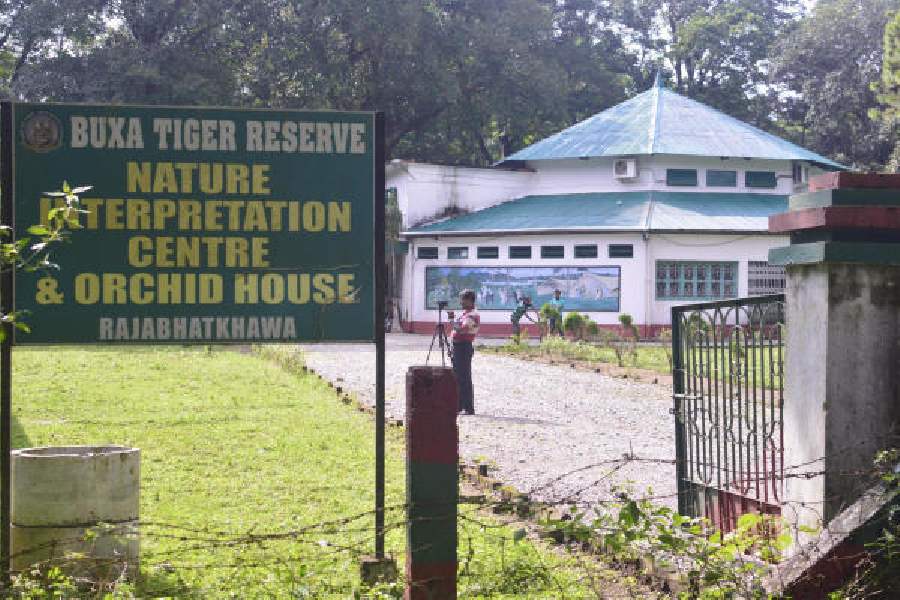
New trend: Tourists flock to Dooars during rains despite the core areas of reserve forests being closed
Don't Miss
Stakeholders of the tourism industry in north Bengal said they would promote monsoon tourism in the region
Binita Paul, TT, Siliguri, 08.07.24 : Every year, Alok Guha, a resort owner at Sishamara near the Jaldapara National Park in Alipurduar district, would announce a lay-off for most of his employees during the monsoon and would ask them to rejoin ahead of Durga Puja.
He would hardly find tourists checking into his resort from mid-June to mid-September when the core areas of the reserve forests in north Bengal remain closed during the rains.
“However, we did not announce lay-off this year as visitors continue to flock to the Dooars even after the monsoon set in. They want to enjoy the lush greenery of forests and tea gardens in the downpour and spend days in leisure. Unlike other years, we are getting bookings in the rainy season,” said Guha.
Stakeholders of the tourism industry in north Bengal said they would promote monsoon tourism in the region.
“India has many destinations where tourism is promoted during the monsoon season. We are planning a similar campaign to draw tourists to the Dooars,” said Raj Basu,
the convener of the Association for Conservation & Tourism.
He said tour operators had earlier considered the monsoon months — from June to September — as an off-season in the Dooars. “But this year, we are calling it a low season. The inflow of tourists to the Dooars is around 30 per cent more this time than any other year,” added Basu.
He pointed out that during the monsoon, the Dooars would transform into a “green paradise,” with vibrant flora and mist-covered hills providing a picturesque backdrop.
Swollen rivers and cascading waterfalls become more majestic during the rains, offering stunning visuals and opportunities for photography. With misty mornings, tea gardens present a unique charm during the monsoon.
A resort owner in the Dooars said there were certain accommodations on the fringes of the Gorumara National Park and the Jaldapara National Park from where tourists could see wild animals roaming on river banks and in forests.
“As visitors are not allowed during the monsoon, forests are undisturbed and animals roam freely. A lucky tourist can see the animals while sitting on their balconies. They have alternative options like trips to nature interpretation centres and tea estates which are not in the core areas of the forests,” the resort owner said.
The Himalayan Hospitality & Tourism Development Network (HHTDN), an apex body of people associated with the tourism industry, is planning to showcase the Dooars and promote “monsoon tourism”.
“We will attend a travel fair in Calcutta next week. There, we will promote the Dooars as a monsoon destination,” said Samrat Sanyal, the general secretary of HHTDN.
A hotel owner based in Siliguri said another reason for the rise in the tourist footfall in the Dooars was the disruption in road connectivity in the hills because of landslides, especially in Sikkim and the Kalimpong district.
“A section of tourists is changing plans and moving to the Dooars because of these reasons,” he said.
Courtesy & source- The Telegraph


0 Response to "New trend: Tourists flock to Dooars during rains despite the core areas of reserve forests being closed"
Post a Comment
Disclaimer Note:
The views expressed in the articles published here are solely those of the author and do not necessarily reflect the official policy, position, or perspective of Kalimpong News or KalimNews. Kalimpong News and KalimNews disclaim all liability for the published or posted articles, news, and information and assume no responsibility for the accuracy or validity of the content.
Kalimpong News is a non-profit online news platform managed by KalimNews and operated under the Kalimpong Press Club.
Comment Policy:
We encourage respectful and constructive discussions. Please ensure decency while commenting and register with your email ID to participate.
Note: only a member of this blog may post a comment.